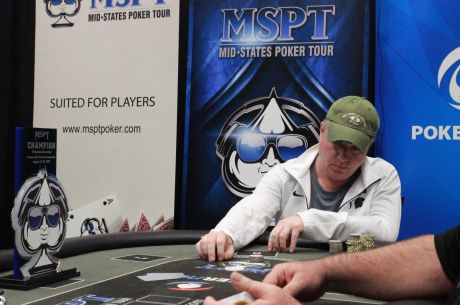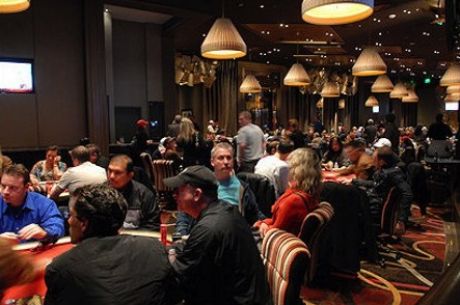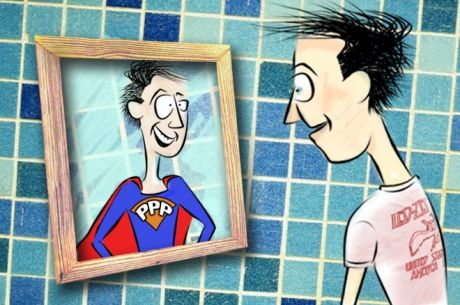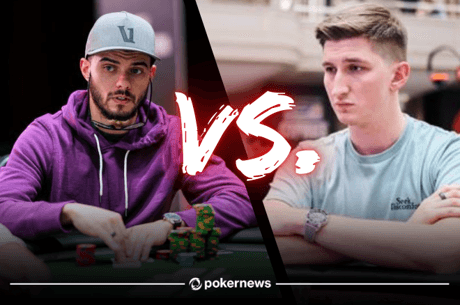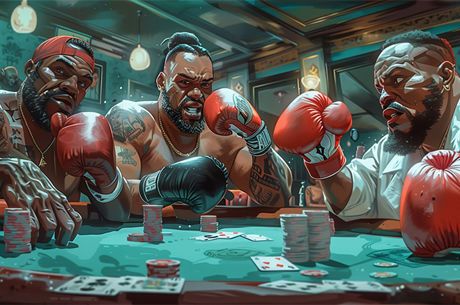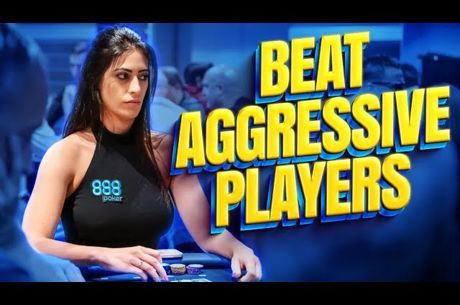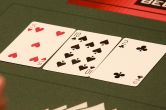Thinking Through the WSOP Main Event with Andrew Brokos
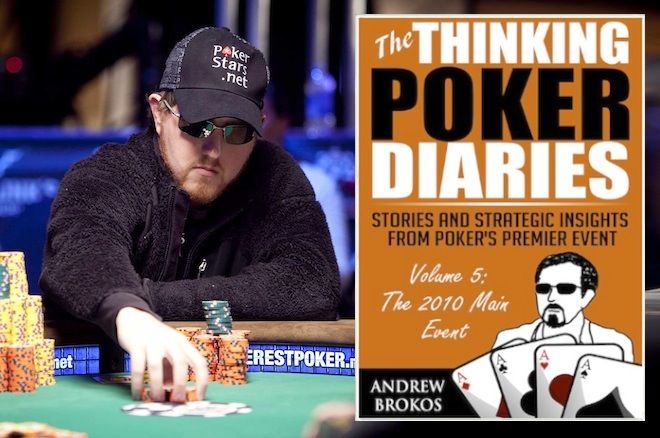
Since he played in his first Main Event in 2006, Andrew Brokos has become a well-known poker writer and instructor. He produces training videos, publishes strategy articles, coaches, writes a poker blog, and co-hosts the Thinking Poker Podcast with Nate Meyvis, who like Brokos is a contributor to the PokerNews strategy section.
Over the last year Brokos has additionally been writing and publishing a series of e-books titled The Thinking Poker Diaries in which he’s recounting his experiences over the years playing in the World Series of Poker Main Event. During the years covered by the first five volumes — 2006 through 2010 — Brokos cashed the Main Event four times and made the top 100 twice, then finished in the top 100 again in 2011.
The Thinking Poker Diaries 5 chronicles his 87th-place showing in the 2010 WSOP Main Event. Like previous volumes, it moves day-by-day through the situations, opponents, and key hands that he encountered. Strategy essays interspersed with the narrative discuss stack size considerations, implied odds, image, balance, and table talk.
As those who have read his articles here on PokerNews know, Brokos has the rare ability to grasp complex poker concepts and express them in clear, accessible prose. Here’s what you can expect inside his e-book.
Early Levels and the Importance of Position
Players in the 2010 WSOP Main Event began play with 300 big blinds. At his starting table that year, Brokos faced several professionals who seemed unlikely to make big mistakes.
“At such a table,” he writes, “I’d rather be dealt a suited Jack-Ten on my button than a pair of aces in first position.” As he explains, this isn’t because Jx10x-suited is a better hand. It’s because being out of position against one or multiple opponents, even with aces, makes it tough to play profitably after the flop. In the early stages of tournaments — and in deep-stacked cash games — a good starting hand and the best position is often more desirable than the best starting hand and poor position.
As stacks shrink to an average of around 100 big blinds, Brokos prefers to have the aces in early position, because the preflop action becomes more significant. As he says, “there’s less room for opponents with position to outplay me post-flop, so my pre-flop equity advantage counts for more.”
Cultivating an Image
What’s the best image to have? Is it better to be perceived as tight and passive or as aggressive and bluffy? For Brokos, there isn’t a right answer.
“It is rarely worth going out of your way to cultivate a particular image,” he argues. “Rather, you should simply play each situation as it comes along and periodically assess how your opponents are likely to view you based on what they’ve seen.”
With a tight image, you can get away with more bluffs but fewer value bets. With a loose image, you can make more value bets but fewer bluffs. And in a game where your opponents aren’t paying attention to how you’re playing, then you can ignore your own image and focus on exploiting their mistakes.
On Day 3, an awareness of his image helped Brokos in a hand against Vince Van Patten. After tangling aggressively with the poker commentator for most of the day, Brokos faced a big river bet holding only a pair of eights.
“I feel like you’ve had a bull’s eye on me for a while, Vince,” Brokos said, and pushed forward calling chips. His pair of eights was the best hand. Correctly assessing how Van Patten perceived him — as an aggressive bully — allowed Brokos to bluff-catch and win the pot.
Balance
Good poker often takes advantage of opponents’ mistakes. If Sue calls a lot, then you should bluff less. If Bob is scared money, then you should bluff more.
But what if you don’t know anyone at your table? Brokos explains that in such a case rather than playing an exploitative style, the ideal strategy is often to bet with a “balanced” range of hands. That is, instead of only bluffing or only value betting, you devise a strategy for doing enough of both so that your opponent can’t outplay you no matter how often she or he calls, folds, or raises.
“Balance matters more when playing against unknown opponents with unknown tendencies,” explains Brokos. “It is the best way to play when you don’t know what to expect.”
For instance, in a discussion of “Optimal Calling Frequency” later in the book, Brokos devises a nightmarish heads-up scenario against Phil Ivey. The board reads 5♠8♦10♠Q♥2♠. You hold A♠10♥ and check, and Ivey bets 14,000 into the 6,000 pot. How often should you call?
Brokos tackles this problem through a complex discussion of game theory, balance, and “blockers” or cards that prevent your opponent from having a certain kind of hand (holding the A♠, for example, blocks Ivey’s ability to have the nut flush). He also addresses the significance of real-time decision-making.
“If I really found myself in this situation,” writes Brokos, “the first question I’d ask myself is how the hand I’m holding compares to all of the other hands I would have played in the same way. If I rarely or never check a hand stronger than Ace-Ten on the river, then I know that I have to call sometimes with Ace-Ten or a comparable bluff-catcher to avoid being exploited by bluffs.”
WSOP Drama
Apart from in-depth strategy, there’s plenty of drama, too, during Brokos’s deep run. On Day 6, with only 200 players left, Brokos gets all-in with top pair and a flush draw against veteran David “ODB” Baker’s overpair. In a massive coinflip worth over two million chips, Brokos catches his flush on the river. It always helps to play well and to run well!
The Thinking Poker Diaries 5 offers an enjoyable mix of stories and strategy, capturing the thrill of a top 100 finish in the Main Event — something most of us won’t experience first-hand — and teaching valuable poker tips along the way.
All five inexpensive volumes of The Thinking Poker Diaries series are available at nitcast.com.
Ben Saxton is a teacher and a writer from upstate New York who has played small stakes poker, both live and online, since the early 2000s. Ben lives in New Orleans and covers poker on the Gulf Coast.
Want to stay atop all the latest in the poker world? If so, make sure to get PokerNews updates on your social media outlets. Follow us on Twitter and find us on both Facebook and Google+!

